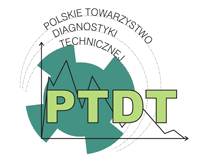The peculiarities of fatigue process zone formation of structural materials
1
Karpenko Physico-Mechanical Institute of the NAS of Ukraine_1,
Naukova Str. 5, 79060 Lviv, Ukraine
2
Lviv Polytechnic National University_2,
S. Bandery Str. 12, 79013 Lviv, Ukraine
3
University of Warmia and Mazury in Olsztyn, Faculty of Technical Science_3,
Oczapowskiego str. 11D, 10-736 Olsztyn, Poland
4
The John Paul II Katholic Uniwersity of Lublin, Faculty of Physical Chemistry and Physicochemical Fundamentals of Environmental Engineering_4, Racławickie Al. 14, 20-950 Lublin, Poland
Submission date: 2018-05-26
Final revision date: 2018-07-31
Acceptance date: 2018-09-03
Online publication date: 2018-09-04
Publication date: 2018-09-04
Corresponding author
Yevhen Kharchenko
Lviv Polytechnic National University_2, \nS. Bandery Str. 12, 79013 Lviv, Ukraine, ul. Oczapowskiego 11E, pok. 126, 10-736 Olsztyn, Polska
Lviv Polytechnic National University_2, \nS. Bandery Str. 12, 79013 Lviv, Ukraine, ul. Oczapowskiego 11E, pok. 126, 10-736 Olsztyn, Polska
Diagnostyka 2018;19(4):27-32
KEYWORDS
TOPICS
ABSTRACT
It is shown that with a cyclic loading in the vicinity of the stress concentrator within the static and cyclic plastic zones, a specific volume of material is gradually formed – the fatigue process zone. Its size d* determines the length of non-propagated cracks or safety defects in the material and can be a determining factor in the diagnosis of material damage. For these materials, the size d* does not depend a lot on the type and geometric characteristics of the stress concentrator. It can be determined by laboratory conditions. While detecting the defects which are longer than d*, it is decided to reduce the intervals between inspections of the construction element, repair or replace it.
REFERENCES (19)
1.
Tsyrul’nyk OT, Nykyforchyn HM, Petryna DY, Hredil’ MI, Dz’oba IM. Hydrogen degradation of steels in gas mains after long periods of operation. Materials Science. 2007; 43(5): 708-717. https://doi.org/10.1007/s11003....
2.
Krechkovs’ka HV, Mytsyk AB, Student OZ, Nykyforchyn HM. Diagnostic indications of the in-service degradation of the pressure regulator of a gas-transportation system. Materials Science. 2016; 52(2): 233-239. https://doi.org/10.1007/s11003....
3.
Ostash OP, Andreiko IM, Kulyk VV, Uzlov IH, Babachenko OI. Fatigue durability of steels of railroad wheels. Materials Science. 2007; 43(3): 403-414. https://doi.org/10.1007/s11003....
4.
Markashova LI, Poznyakov VD, Gaivoronskii AA, Berdnikova EN, Alekseenko TA. Estimation of the strength and crack resistance of the metal of railway wheels after long-term operation. Materials Science. 2012; 47(6): 799-806. https://doi.org/10.1007/s11003....
5.
Ostash OP, Andreiko IM, Kulyk VV, Vavrukh VI. Influence of braking on the microstructure and mechanical behavior of railroad wheel steels. Materials Science. 2013; 48(5): 569-574. https://doi.org/10.1007/s11003....
6.
Nesterenko BG, Nesterenko GI. Fatigue and damage tolerance of aging airplane structures. Advanced Materials Research. 2014; 891-892: 1669-1674. https://doi.org/10.4028/www.sc....
7.
Dziendzikowski M, Dragan K, Kurnyta A, Klysz S, Leski A. Health monitoring of the aircraft structure during a full scale fatigue test with use of an active piezoelectric sensor network. Solid State Phenomena. 2015; 220-221: 328-332. https://doi.org/10.4028/www.sc....
8.
Frost NE, Dugdale DS. Fatigue test of notched mild steel plates with measurements of fatigue cracks. Journal of the Mechanics and Physics of Solids. 1957; 5(3): 182-192. https://doi.org/10.1016/0022-5....
9.
Kitagawa H, Takahashi S. Applicability of fracture mechanics to very small cracks or the crack in the early stage. 2-nd Int. Conf. On Mechanical Behaviour of Materials, ICM2, ASM Metal Park, Ohio. 1976: 627-631.
10.
El Haddad MH, Topper TH, Smith KN. Prediction of non-propagating cracks. Engineering Fracture Mechanics. 1979; 11(3): 573-584. https://doi.org/10.1016/0013-7....
11.
El Haddad MH, Dowling NF, Topper TH, Smith KN. J-integral applications for short fatigue cracks at notches. International Journal of Fracture. 1980 16(1): 15-30. https://doi.org/10.1007/BF0004....
12.
Abdel-Raouf H., Topper T. H., Plumtree A. A model for the fatigue limit and short crack behaviour related to surface strain redistribution. Fatigue and Fracture of Engineering Materials and Structures 1992, 15(9): 895-909.
14.
Tobler RI, Shu OS. Fatigue crack initiation from notches in austenitic stainless steel. Cryogenic. 1986, 26(7): 396-401. https://doi.org/10.1016/0011-2....
15.
Devaux JC, D'escantha J, Rabbe P, Pellissier-Tanon A. A criterion for analysing fatigue crack initiation geometrical singularities. Trans. 5th Int. Conf. Struct. Mech. React. Technol., Berlin, 1979. G8 (1): 1-8.
16.
Ostash OP, Panasyuk VV, Kostyk EM. A phenomenological model of fatigue macrocrack initiation near stress concentrators. Fatigue and Fracture of Engineering Materials and Structures. 1999, 22(2): 161-172. https://doi.org/10.1046/j.1460....
17.
Ostash OP, Panasyuk VV. Fatigue process zone at notches. International Journal of Fatigue. 2001, 23(7): 627-636. https://doi.org/10.1016/S0142-...
18.
Ostash OP, Muravs’kyi LI, Voronyak TI, Kmet’ AB, Andreiko IM, Vira VV. Determination of the size of the fatigue prefracture zone by the method of phase-shifting interferometry. Materials Science. 2011; 46(6): 781-788. https://doi.org/10.1007/s11003....
19.
Ostash OP, Chepil RV, Andreiko IM, Vira VV, Prokopets VI. Patent of Ukraine № 69067. Method of determining the size of the fatigue process zone. Published: 25.04.2012, Bulletin 8.
Share
RELATED ARTICLE
We process personal data collected when visiting the website. The function of obtaining information about users and their behavior is carried out by voluntarily entered information in forms and saving cookies in end devices. Data, including cookies, are used to provide services, improve the user experience and to analyze the traffic in accordance with the Privacy policy. Data are also collected and processed by Google Analytics tool (more).
You can change cookies settings in your browser. Restricted use of cookies in the browser configuration may affect some functionalities of the website.
You can change cookies settings in your browser. Restricted use of cookies in the browser configuration may affect some functionalities of the website.


